It was Michael Flatley, the man who famously insured his own legs for £25 million, who once declared he would be a dancer until the day he died.
Naturally, no one doubted it. The fleet-footed Irish-American choreographer was riding the crest of a very large wave after finding fame as creative director and principal star of spectacular stage shows Lord Of The Dance and the iconic Riverdance.
Flatley’s innovations in movement and rhythm had already turned him into a household name synonymous with the modernisation of traditional Irish dance, and it was he alone who endeared his craft to a new legion of significantly younger fans.
But time can be as unpredictable as it is cruel, and these days Flatley, 67, is attempting an unexpected and rather more perilous dance – to Dublin, and the highest seat of Irish political power.
Indeed, the retired performer has announced somewhat unlikely plans to run for the Irish Presidency this October, a move that may well see him compete against MMA fighter Conor McGregor, another surprise candidate who announced his own bid in a recent Instagram post.
Flatley’s desire to replace outgoing President Michael D. Higgins was revealed in July during a High Court planning battle regarding his sprawling Castlehyde mansion in County Cork.
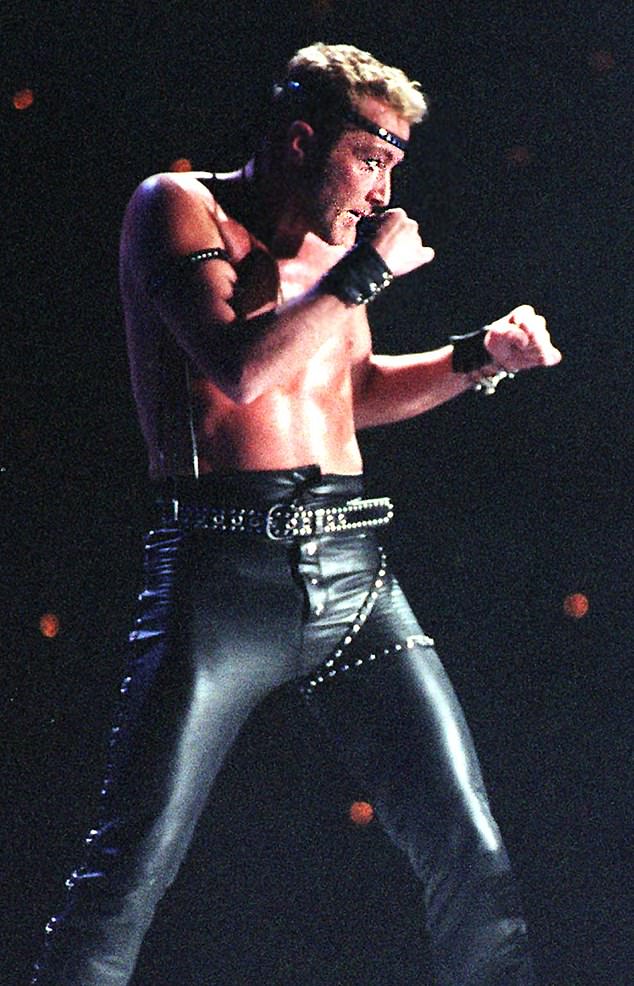
Michael Flatley endeared himself millions as the creator of hit stage shows Lord Of The Dance and Riverdance – but he’s now back in the spotlight for rather different reasons
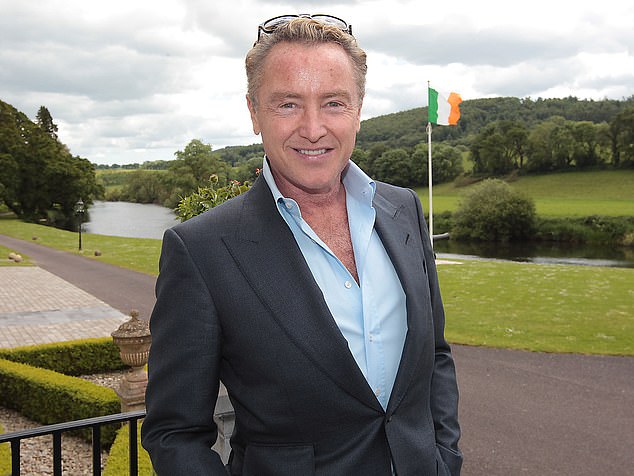
The retired performer has announced somewhat unlikely plans to run for the Irish Presidency this October, a move that may well see him compete against MMA fighter Conor McGregor
Inevitably, the incredible prospect of Flatley, his wife Niamh O’Brien and son Michael Jr, taking residence at Áras an Uachtaráin has once more turned the spotlight his way – some nine years after persistent pain in his spine, knees and feet forced him to retire.
A pioneering choreographer, Flatley shot to fame in Riverdance, first performed as a seven-minute interval during the 1994 Eurovision Song Contest and watched by more than 300 million viewers.
It resulted in a standing ovation from the 4,000 strong audience, evidently mesmerised by the then unknown dance troupe’s undeniable talent as they completed the performance at Dublin’s Point Theatre.
Buoyed by its success, Flatley turned the show into a full-length spectacle that opened to acclaim at the same venue the following year.
Discussing the show’s impact in his 2006 biography Lord of the Dance: My Story, he explained: ‘It was a really, really important moment in modern Irish culture which extended far beyond Eurovision.
‘It completely eclipsed the event that it was part of and became a phenomenon.’
Following Riverdance, which he abruptly left within a year after a bitter royalties dispute, Flatley created the equally successful Lord Of The Dance in 1996.
As the show’s principal star he would tour the world, playing to 60 million people in 60 countries and tuning his passion project into one of the most successful – and lucrative – dance shows of all time.
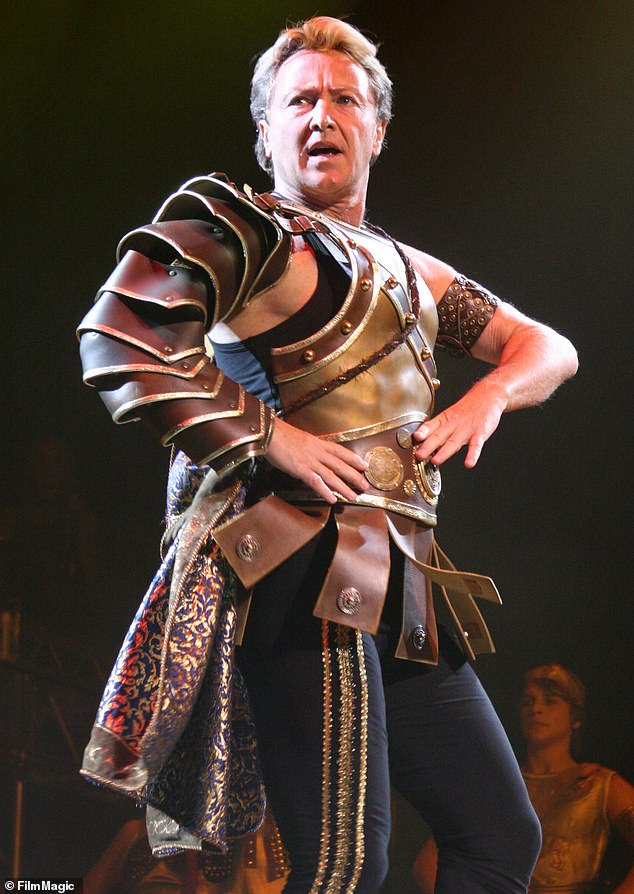
Flatley’s innovations in movement and rhythm turned him into a household name synonymous with the modernisation of traditional Irish dance
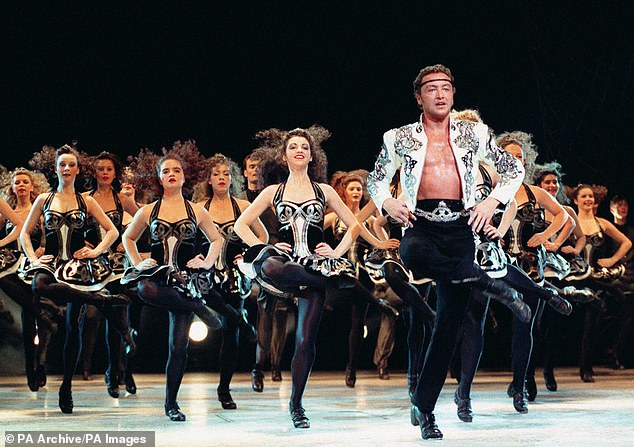
It was Flatley who single-handedly endeared his craft to a new legion of significantly younger fans (pictured onstage at the London Coliseum)
But decades of high-intensity choreography had taken its toll, and the injury ravaged performer was only involved in two of the various numbers featured in his farewell show, Lord of the Dance: Dangerous Games, during its Broadway run in 2015.
Discussing the injuries he sustained with BBC Radio 2, he said: ‘I am always in pain. Agony. I have wrecked my body with dance. I can’t say I wasn’t warned.
‘The value of friends – the value of loved ones – all of a sudden, material things faded away into the past.’
He added: ‘I’ve been warned for years and years but it’s increasingly more difficult now to do what I need to do properly and I always said if I’m not dancing in prime time then I don’t want to do it anymore.’
Retirement marked the end of an exceptional career for Flatley, and the Irish-American star – now worth an estimated £250 million – could be forgiven for enjoying its considerable spoils as he exited stage right, hung up those battered tap shoes and retreated to his lavish estate in rural County Cork.
But the man who still holds the Guinness World Record for tap dancing 35 times per second had other ideas, and the ensuing nine years have him step out of his comfort zone on more than one occasion.
Indeed, Flatley had only just entered retirement when he surprised fans by reinventing himself as an actor in his self-financed, self-produced and self-written thriller, Blackbird.
Here, he starred as the embattled Victor Blackley, an ex-secret agent who attempts to ‘escape his past’ by opening a nightclub in the Caribbean, only for a troublesome former lover to follow in hot pursuit.
With an exotic backdrop, boatloads of bullets and action aplenty, it bore all the hallmarks of a jet-setting James Bond adventure, and the pistol-wielding Flatley certainly looked the part in his blood spattered tuxedo as filming commenced in Barbados.
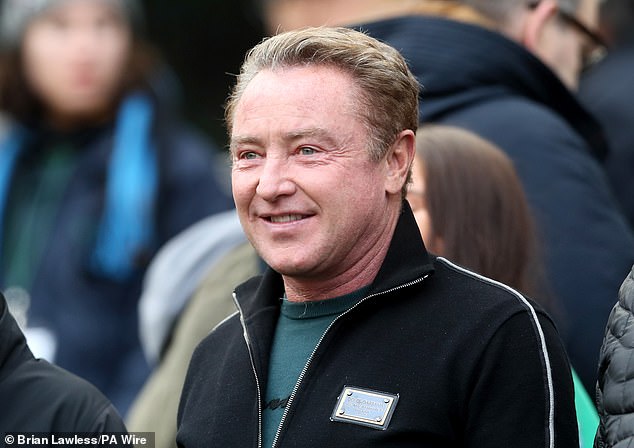
But time can be as unpredictable as it is cruel, and these days Flatley is attempting a rather more perilous dance – to Dublin, and the highest seat of Irish political power
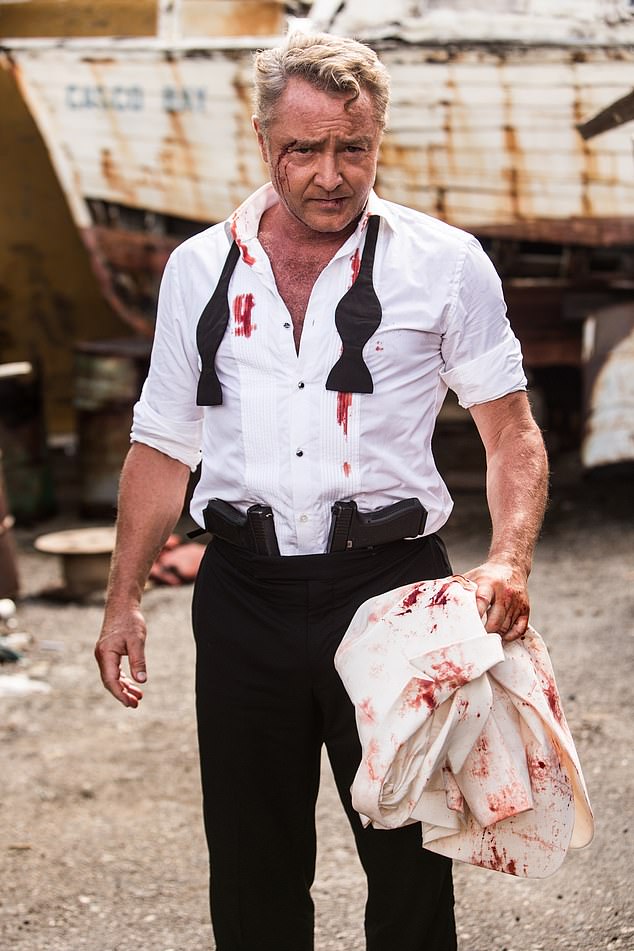
Flatley had only just entered retirement when he surprised fans by reinventing himself as an actor in his self-financed, self-produced and self-written thriller, Blackbird (pictured)
But hard-to-please critics were not convinced and the film was mercilessly savaged upon release, with Peter Bradshaw of The Guardian comparing the acting to ‘unsexy bits of a mid-80s porn film’.
Elsewhere, The Telegraph instantly dismissed it an ‘awful 007 rip-off’, while the Irish Examiner, embracing a similar theme, claimed it ‘will leave you rather more shaken than stirred’.
For one so used to glowing reviews it was a chastening experience, and Blackbird would be his only foray into the world of contemporary cinema.
But Flatley was already dipping his toes into a diverse range of metaphorical pies, notably art, having put his retired feet to lucratively good use in the creation of numerous paintings.
His unorthodox creative process – developing artworks by dancing on paint splattered canvas – would lead to unprecedented success, and Flatley soon became one of Ireland’s most expensive living artists.
‘It’s not only my feet, I throw paint, I use different instruments – I use boards – I would never use the brush – it’s abstract expression – that’s the best way to describe it’, Flatley told Daily Mail Australia.
‘We’ve been very blessed and very lucky that people seem to have taken to it.’
And take to it they did. By 2015, he was second only to to Jack B Yeats in the list of top prices for paintings sold at auction, with artworks such as The Power and Flight of the Quetzal being snapped up for a respective €77,500 (£66,704) and €44,000 (£37,870) each.
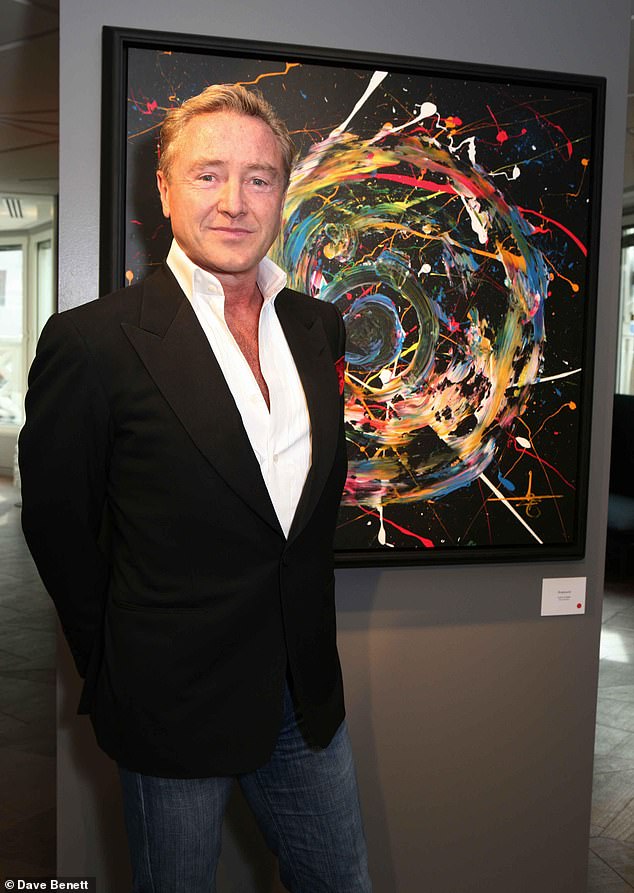
Since retiring from dance, Flatley has became one of Ireland’s most expensive living artists and has sold numerous paintings at auction (pictured with one such creation, Firedance, in 2015)
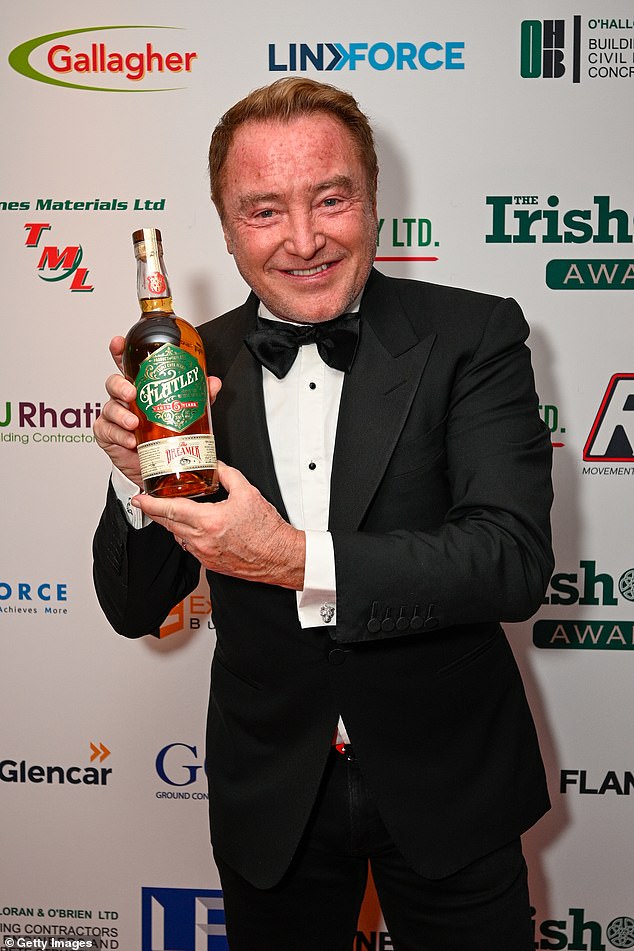
Flatley’s signature whiskey The Dreamer was released last year, and he admitted the distinctive bottle’s family crest was a poignant tribute to his late father, Michael Sr,
Elsewhere Flatley was making his mark on food and beverages, having launched his own company, Castlehyde – named after his County Cork estate – in 2021.
Signature whiskey The Dreamer was released last year, and Flatley admitted the distinctive bottle’s family crest was a poignant tribute to his late father, Michael Sr, an Irish plumber who immigrated to the United States in 1947.
‘Irish whiskey was a favourite of my father’s,’ he told Hospitality Ireland at the time.
‘It was through his passion that I came to appreciate its complex flavours, so it’s a very proud moment to launch Flatley Irish Whiskey, as I know he will be smiling down on me.’
He added: ‘For me, Irish whiskey, much like Irish dance, embodies the essence of Ireland – its history, its spirit, and its ability to bring people together in celebration.’
It was a special moment for the dancer, then in the early stages of remission after being diagnosed with a malignant melanoma little more than a year earlier.
Confirming the diagnosis with his Instagram followers in January 2023, a post read: ‘Dear friends, we have something personal to share, Michael Flatley has been diagnosed with an aggressive form of cancer.
‘He has undergone surgery and is in the care of an excellent team of doctors. No further comments will be made at this time. We ask only for your prayers and well wishes. Thank you.’

Flatley announced that he had been diagnosed with cancer in an Instagram post shared with followers in 2024
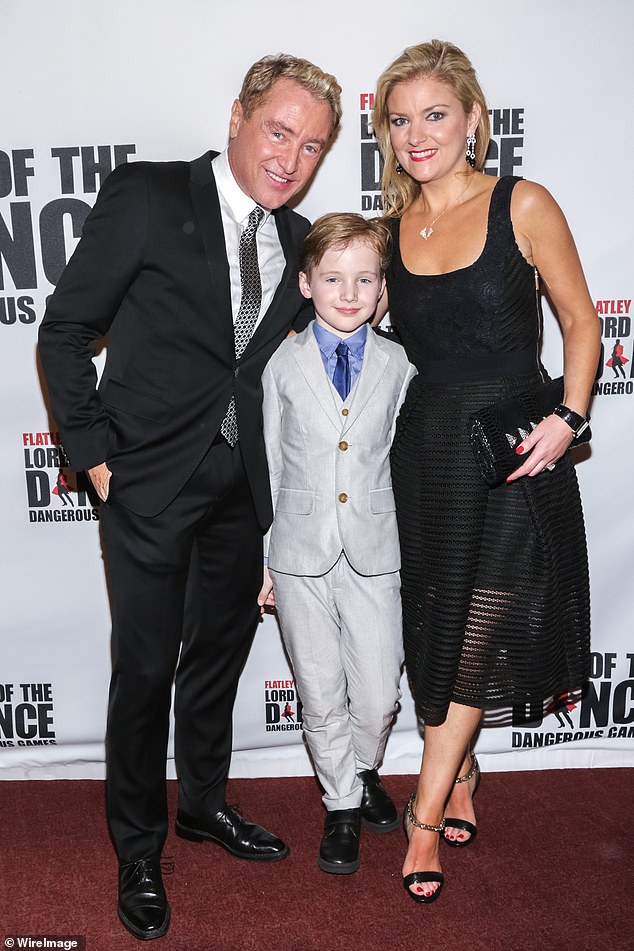
Flatley with wife Niamh and son Michael in November 2015. The dancer admitted their support helped him deal his subsequent ordeal as he prepared for surgery
Flatley later insisted the support of his family, notably wife Niamh, had helped him deal with the shock of a second diagnosis and his subsequent ordeal as he prepared for surgery.
‘I feel great but I think having positive mental attitude always helps. I’m not going to lie, it wasn’t easy,’ he said during an appearance on RTE’s Late Late Show.
‘Getting the news that you have cancer is tough, it’s not easy to take in but I’m married to the greatest girl in the world who looks after me and believe in me and stood beside me.
‘I had prepared myself for the whole ordeal but I really wasn’t 100% prepared when the time came.’
He added: ‘My family is everything to me. What if I didn’t come out the other side? I felt confident and my surgeon was great but there’s a chance I won’t come out of this.
‘I can’t explain the love I have for my wife and son and the love I have for Ireland and the Irish people and the love I have for life.’
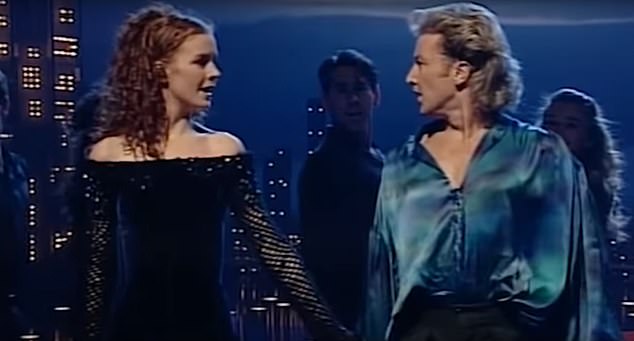
Michael pictured in 1994 during his Eurovision performance. The seven-minute performance was extended into a full-length spectacle and opened at Dublin’s Point Theatre in 1995
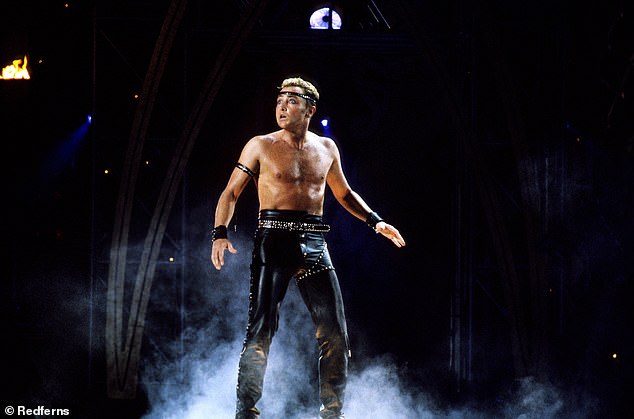
After being sacked from Riverdance, Michael developed his own show Lord Of The Dance, which opened in Dublin in 1996 and was seen by over 60 million people
Now, Flatley is preparing for a rather different challenge after throwing his hat into the ring for the Irish Presidency alongside MMA fighter McGregor.
His political ambitions were revealed during a High Court planning battle concerning his Castlehyde mansion after he notified the court of a ‘material change in circumstances’.
Flatley, who is eligible to run as an Irish citizen, said he had not made a final decision on the matter but is consulting with a “team of advisers”.
Speaking to RTE Radio One about newspaper speculation on a potential bid, the American said he is stopped on the street “everywhere” he goes and asked if he will run.
The choreographer and dancer said: ‘I take it seriously but no I have not made a decision… I have a huge business to run, I have an army of dancers counting on me to make a living.
‘I have a whiskey company, a beautiful young wife and son that I want to spend time with. If I thought that I could be of benefit to the Irish people and – maybe more importantly – if I thought I could be a voice of the Irish people.’
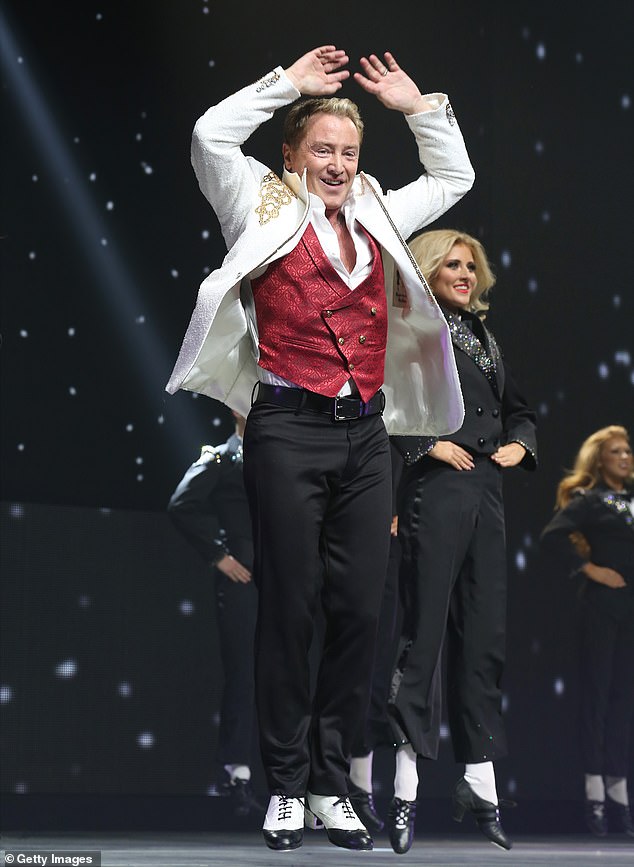
Decades of high-intensity choreography took a physical toll, and the injury ravaged performer was only involved in two of the various numbers featured in his farewell show, Lord of the Dance: Dangerous Games, following its Broadway launch in 2015 (pictured)
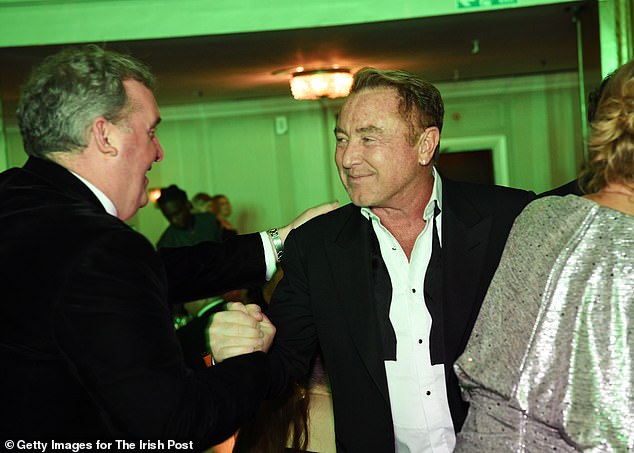
Now, Flatley is preparing for a rather different challenge after throwing his hat into the ring for the Irish Presidency
He added: ‘Right now, I don’t think they have a voice – not a true proper deep voice that you know that speaks their language.’
Flatley said he hears they concerns of “average person on the street” and they are not “happy right now”, adding: “Somebody has to speak for the Irish people.”
He said he was not sure the role needed another politician, adding that he had spent three decades promoting Ireland and Irish culture.
He said he had not been approached by any political party, but had been contacted by some “people in the know”.
‘It’s certainly not something that I’ve made any decision on, but it does get frustrating when you see the hardworking Irish taxpayer working as hard out and having no say in things.’
Asked if he was leaning more in favour of running, he replied: ‘Let it be said that I stand for Ireland and the Irish people.’
Candidates need to be nominated by at least 20 members of the Irish parliament or at least four local authorities. They must also be an Irish citizen who is 35 or older.
The next election has to happen 60 days before the current President Michael D Higgins’s term ends on November 11.












